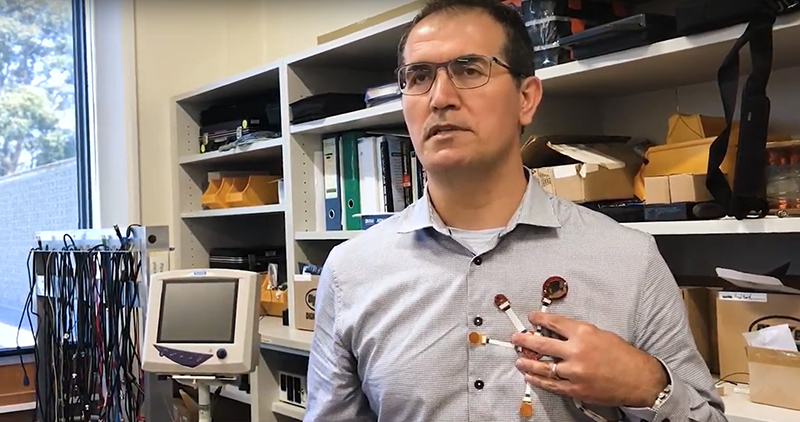
Researchers at Monash University in Australia have developed a revolutionary, wearable blood pressure monitoring device that can continuously monitor blood pressure during a variety of activities including while exercising and during sleep.
Read more SunTech and Valencell Partner Up for New Blood Pressure Measurement Solutions
Conventionally, blood pressure is measured using a cuff device that you wrap around your arm. The device is pressure-based, meaning it puts pressure on your arm and measures blood pressure. The new device is wearable; when you attach it to your chest it measures blood flow within the main aorta. There’s time information that the blood being circulated from the heart to the other organs. That time information is collected by the wearable device and converts that to blood pressure.
“For close to a century, the health sector has used the cuff device to measure blood pressure. More invasive measures are used to monitor the continuous blood pressure of critically ill patients, which are uncomfortable and could potentially cause infection due to ischemia,” said Mehmet Yuce, a researcher involved in the study.
So far, the researchers have tested their device in a group of 43 volunteers.

Data was recorded during a range of sedentary and physical activities during the participants’ regular day. Results were published in the prestigious international journal Nature Scientific Reports.
Researchers used continuous wave radar (CWR) and photoplethysmogram (PPG) sensors to calculate continuous blood pressure measurements. The CWR and PPG sensors were placed on the sternum and left earlobe respectively, reports Monash University.
The results showed that the device was 93% accurate in measuring blood pressure in those completing posture tasks, as well as 83% accurate during exercise.
Read more Biobeat’s Wearable Blood Pressure Monitors Receive FDA 501K Clearance
“The CWR sensors present a low-power, continuous and potentially wearable system with minimal body contact to monitor aortic valve activities directly. Doctors would be interested to see such information for long-term better diagnosis of their patients,” said Yuce. “Results of this study demonstrate the potential superiority of CWR-based PEP extraction for various medical monitoring applications, including blood pressure monitoring.”











